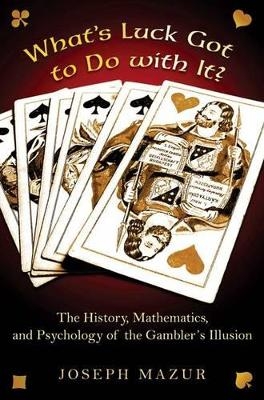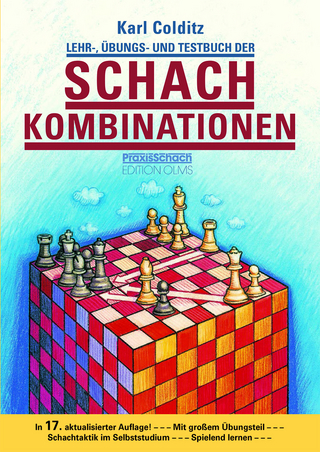
What's Luck Got to Do with It?
Princeton University Press (Verlag)
978-0-691-13890-9 (ISBN)
Why do so many gamblers risk it all when they know the odds of winning are against them? Why do they believe dice are "hot" in a winning streak? Why do we expect heads on a coin toss after several flips have turned up tails? What's Luck Got to Do with It? takes a lively and eye-opening look at the mathematics, history, and psychology of gambling to reveal the most widely held misconceptions about luck. It exposes the hazards of feeling lucky, and uses the mathematics of predictable outcomes to show when our chances of winning are actually good. Mathematician Joseph Mazur traces the history of gambling from the earliest known archaeological evidence of dice playing among Neolithic peoples to the first systematic mathematical studies of games of chance during the Renaissance, from government-administered lotteries to the glittering seductions of grand casinos, and on to the global economic crisis brought on by financiers' trillion-dollar bets.
Using plenty of engaging anecdotes, Mazur explains the mathematics behind gambling--including the laws of probability, statistics, betting against expectations, and the law of large numbers--and describes the psychological and emotional factors that entice people to put their faith in winning that ever-elusive jackpot despite its mathematical improbability. As entertaining as it is informative, What's Luck Got to Do with It? demonstrates the pervasive nature of our belief in luck and the deceptive psychology of winning and losing.
Joseph Mazur is professor emeritus of mathematics at Marlboro College. His books include "The Motion Paradox: The 2,500-Year-Old Puzzle behind All the Mysteries of Time and Space" and "Euclid in the Rainforest: Discovering Universal Truth in Logic and Math".
Introduction xi Part I: The History Chapter 1. Pits, Pebbles, and Bones Rolling to Discover Fate 3 Chapter 2. The Professionals Luck Becomes Measurable 19 Chapter 3. From Coffeehouses to Casinos Gaming Becomes Big Business 37 Chapter 4. There's No Stopping It Now From Bans to Bookies 46 Chapter 5. Betting with Trillions The 2008 World Economic Calamity 58 Part II : The Mathematics Chapter 6. Who's Got a Royal Flush? One Deal as Likely as Another 75 Chapter 7. The Behavior of a Coin Making Predictions with Probability 83 Chapter 8. Someone Has to Win Betting against Expectation 101 Chapter 9. A Truly Astonishing Result The Weak Law of Large Numbers 118 Chapter 10. The Skill/Luck Spectrum Even Great Talent Needs Some Good Fortune 131 Part III : The Analysis Chapter 11. Let It Ride The House Money Effect 157 Chapter 12. Knowing When to Quit Psychomanaging Risk 168 Chapter 13. The Theories What Makes a Gambler? 182 Chapter 14. Hot Hands Expecting Long Runs of the Same Outcome 202 Chapter 15. Luck The Dicey Illusion 209 Acknowledgments 217 Appendix A. Descriptions of the Games Used in This Book 219 Appendix B. Glossary of Gambling Terms Used in This Book 224 Appendix C. The Weak Law of Large Numbers 227 Appendix D. Glossary of Mathematical Definitions 229 Appendix E. Callouts 236 Notes 249 Further Reading 265 Index 267
| Erscheint lt. Verlag | 6.6.2010 |
|---|---|
| Zusatzinfo | 35 halftones. 10 line illus. |
| Verlagsort | New Jersey |
| Sprache | englisch |
| Maße | 152 x 235 mm |
| Gewicht | 567 g |
| Themenwelt | Sachbuch/Ratgeber ► Freizeit / Hobby ► Spielen / Raten |
| Sachbuch/Ratgeber ► Natur / Technik | |
| ISBN-10 | 0-691-13890-7 / 0691138907 |
| ISBN-13 | 978-0-691-13890-9 / 9780691138909 |
| Zustand | Neuware |
| Haben Sie eine Frage zum Produkt? |
aus dem Bereich


